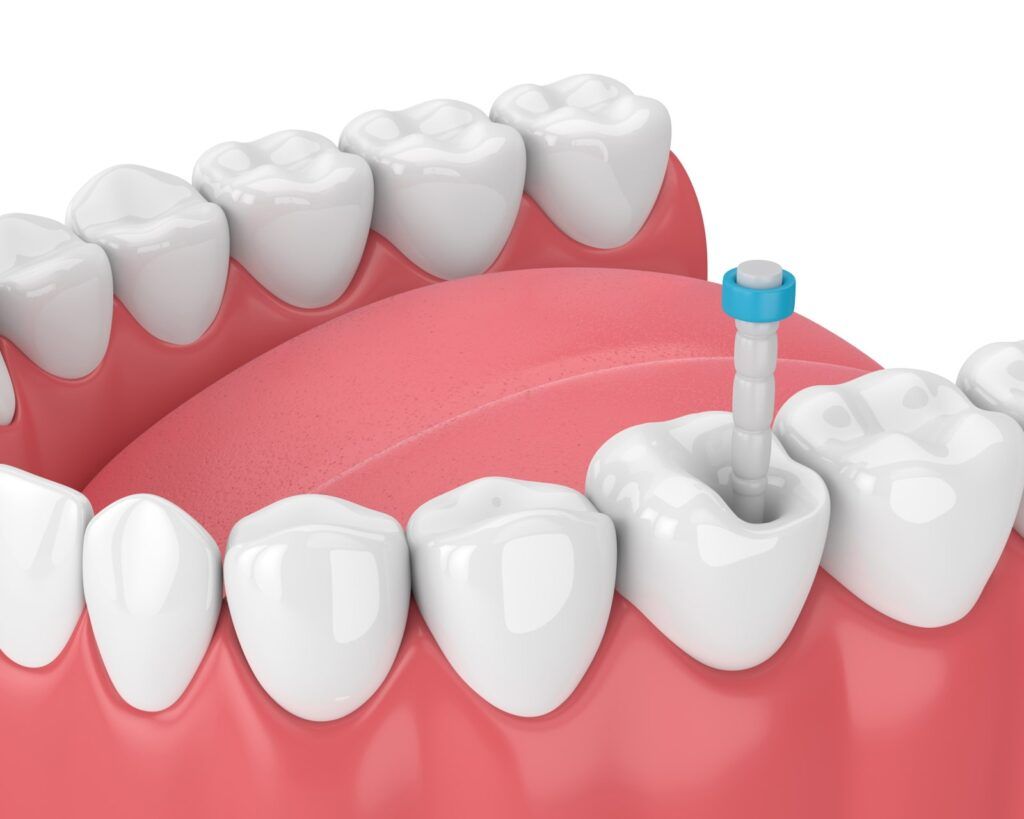Tooth anatomy contains many intricate, working parts, and tooth anatomy greatly affects how endodontists perform treatments. In these cases, endodontists often have to handle cases where the tooth’s shape, morphs, and sections affect how they approach the affected tooth. Due to how much variance there is with the root canal system, endodontists have developed classification systems to report on dental anomalies and better understand how to restore endodontically compromised teeth. Endodontic treatments have always to be adjusted to account for these changes in root structure, and one of the techniques that are often used to accommodate for these differences is fiber posts.
Because of the development of fiber posts to stabilize the tooth, these techniques have resulted in a new interest in tooth anatomy. Endodontists that work with fiber post technique should always understand the canal shape they’re dealing with by assessing the post-space availability and anatomical variations of the affected tooth. Dentists can better determine how fiber posts should be used by looking at and assessing these variations.
How Do Root Canal Shapes Affect Endodontic Treatment?
Understanding the root canal shapes in endodontics is essential for correcting and adapting to new treatments. In these circumstances, dentists work with classifications of root canal shapes to define them and analyze how they can be treated when either infected or damaged. Through observations that have occurred over the last 10 to 20 years, these root canals can be defined by the following shapes:
- Tubular Canals: Tubular canals are root canals shaped like pipes and deeper in canal shape than most teeth. These types of root canals are found within tooth variations such as maxillary incisors, mandibular canines, maxillary first premolars, and maxillary first molars. It is also considered a parent class of other types of root canal shapes, including round, oval, and triangular.
- Oval and Round Canals: Oval and round canals have smaller, circular openings in the root canals and most often occur in the mandibular canines, maxillary incisors, and mandibular first premolars. These root canal shapes are often considered the easiest to treat alongside tubular canals.
- Triangular Canals: Triangular canals are rarer to find within the mouth’s oral cavity, but if present, these shapes are most often found within the maxillary canines. However, their narrow space within the inner tooth means that they need extra consideration when preparing for fiber posts.
- Straight Canals: Straight canals tend to be tighter and thus lack the space needed for fiber posts, especially when compared to oval and tubular canals. These types of canal shapes are found within the mandibular first premolars and require specific approaches to treatment.
- Semilunar Canals: Semilunar canals are defined by their crescent shape and are considered rare for canal shapes. When found, they typically occur in the areas where triangular canals develop, such as the maxillary canines.
- Infinity or “8”-shaped canals: The eight-shaped canal presents buccolingual variations, extending to the outer areas of the tooth with a narrow spacing in the center. These shapes are found within the mandibular incisors, mandibular canines, and the maxillary first and second premolars and are considered somewhat rare.
All of these root canal shapes need to be considered for fiber post techniques when developing an endodontic plan. For nonsurgical treatments, many techniques can adapt to the present root canal shape and other health factors affecting the patients. Hence, when going over these techniques, it’s essential to accommodate the varieties in root canals to provide successful endodontic and restorative treatment.
What Are The Top Fiber Post Techniques Used For Treatment?
Fiber posts, in their simplest definition, have a similar elasticity to dentin. They can flex within the tooth slightly to reduce the overall damage to the inner tooth canal and its roots and can appear tooth-colored to mesh with restorative techniques for crowns, veneers, and other types of restorations. They’re rarely affected by corrosion and can easily be retreated if damaged. But for treating complex endodontic cases, fiber post techniques can hugely impact the overall treatment’s success. These techniques can be accommodated for tooth shape variation and include:
- The Simple Canal Technique: The simple canal technique works for more conservative canal shapes and is typically reserved for oval, tubular, and triangular shapes at least 25% larger than the intended fiber post. Bottom-up approaches are used to prepare the space for the fiber posts and to perform the technique; endodontists are encouraged to prepare the canal with matching post-size drills. The simple canal technique is considered straightforward due to its impact on the bonding, setting, and curing techniques.
- Anatomical Post and Core Technique: Often used for oval spaces significantly more significant than the intended post. However, instead of a bottom-up method, dentists are encouraged to use the build-up core material to compensate for any tooth deficiencies, then build down and create an isolated space for the fiber post.
- Post and Accessory Post Technique: Additional posts are used with this technique to create a wider canal opening and are used for more unusual canal shapes such as straight, semilunar, and triangular. These additional posts are cut and pre-bonded together, then placed with a curing light to help provide internal stability and compression strength. With this technique, the additional posts act as a prep stage for restoration and endodontic treatments.
All these techniques work with varying methods to decrease the rate of shrinkage in the inner tooth, provide fracture resistance, and reduce the need for drilling for restorations. Fiber posts have been used over the last decade as an excellent resource for endodontists due to their benefits. They can be used to reinforce unstable teeth, reduce the amount of stress placed on the tooth, and provide room for further improvements. Most of all, these techniques are entirely useful and adaptable to anatomical root variations and can reduce the overall rate of endodontic failures and create healthier smiles.



